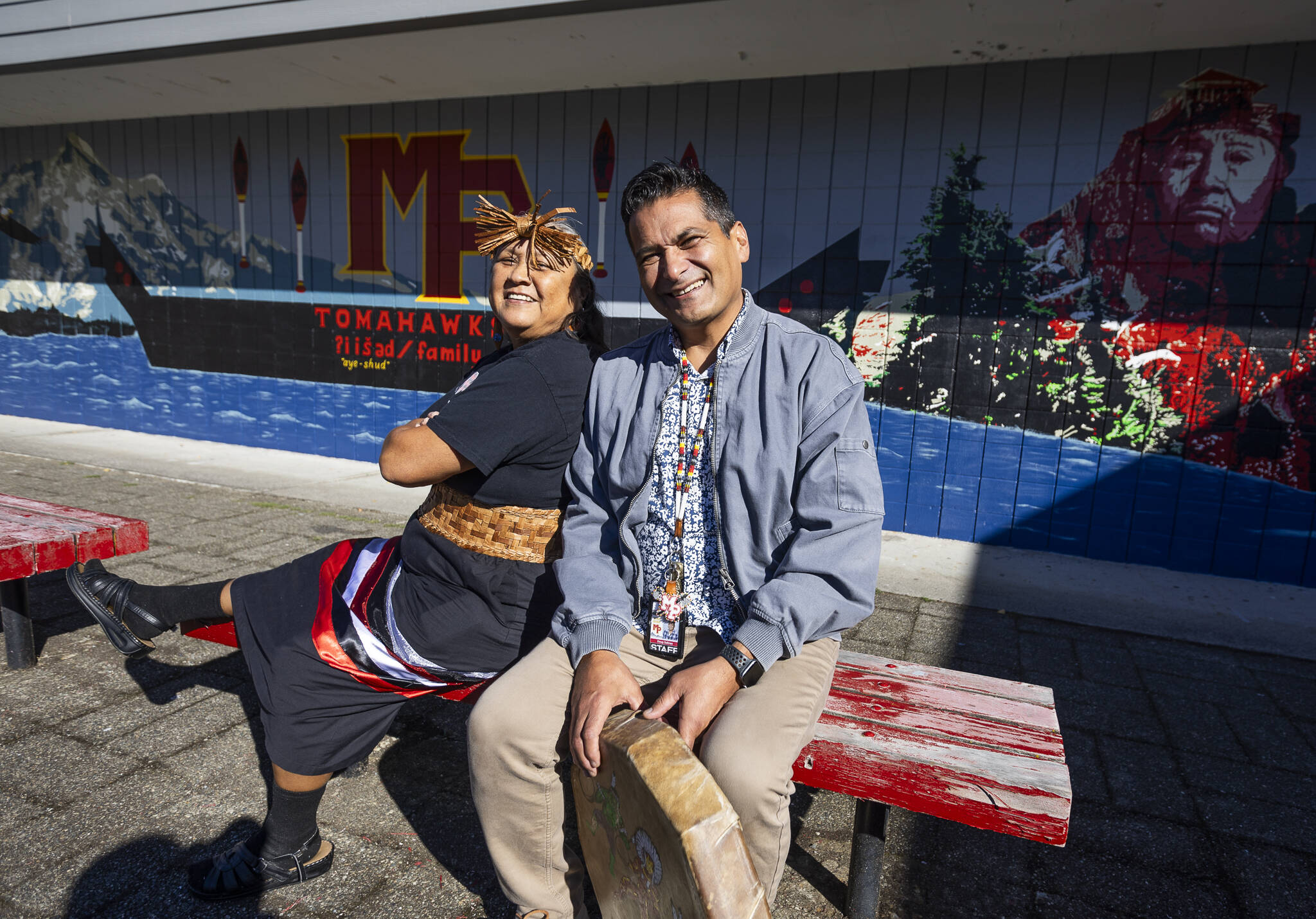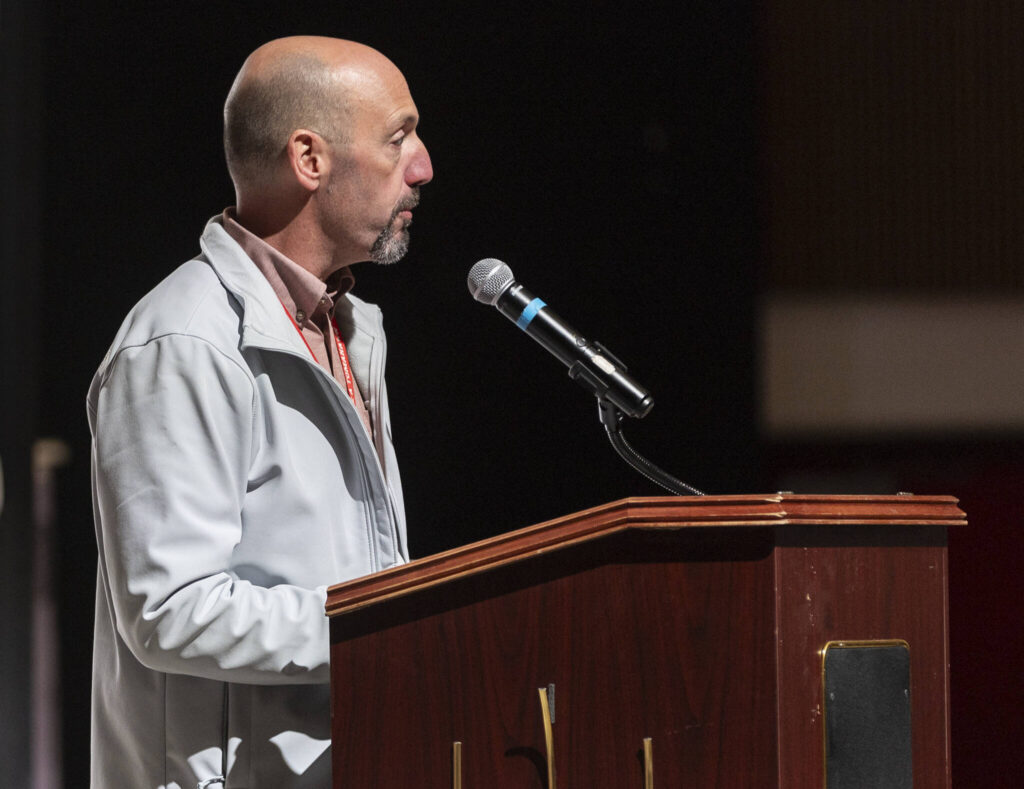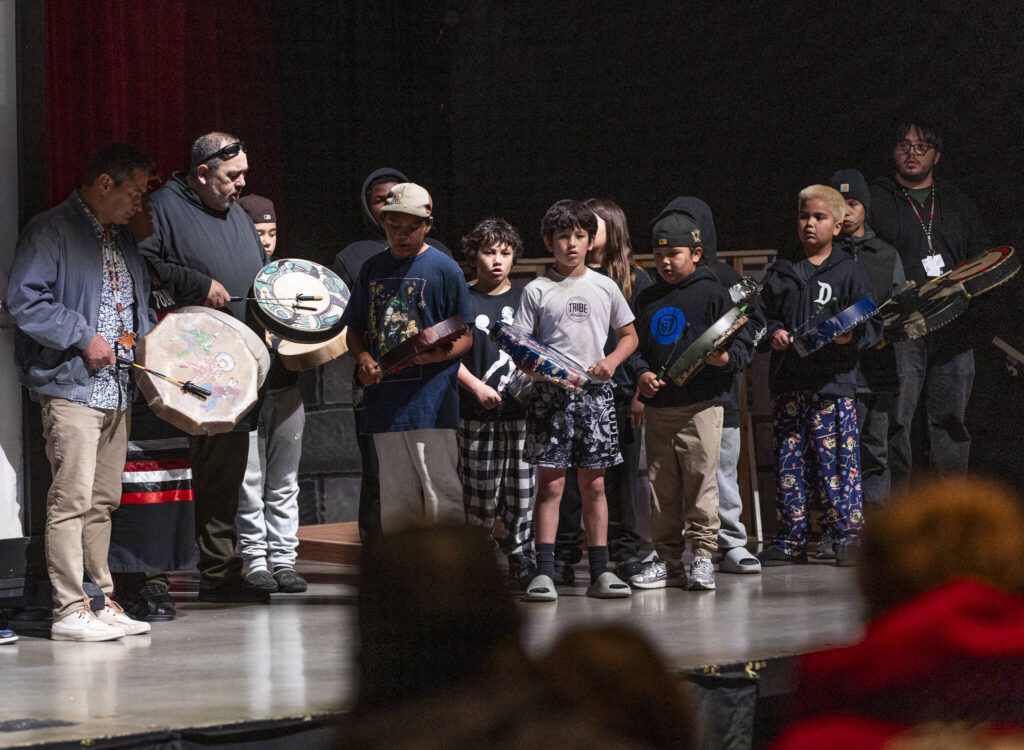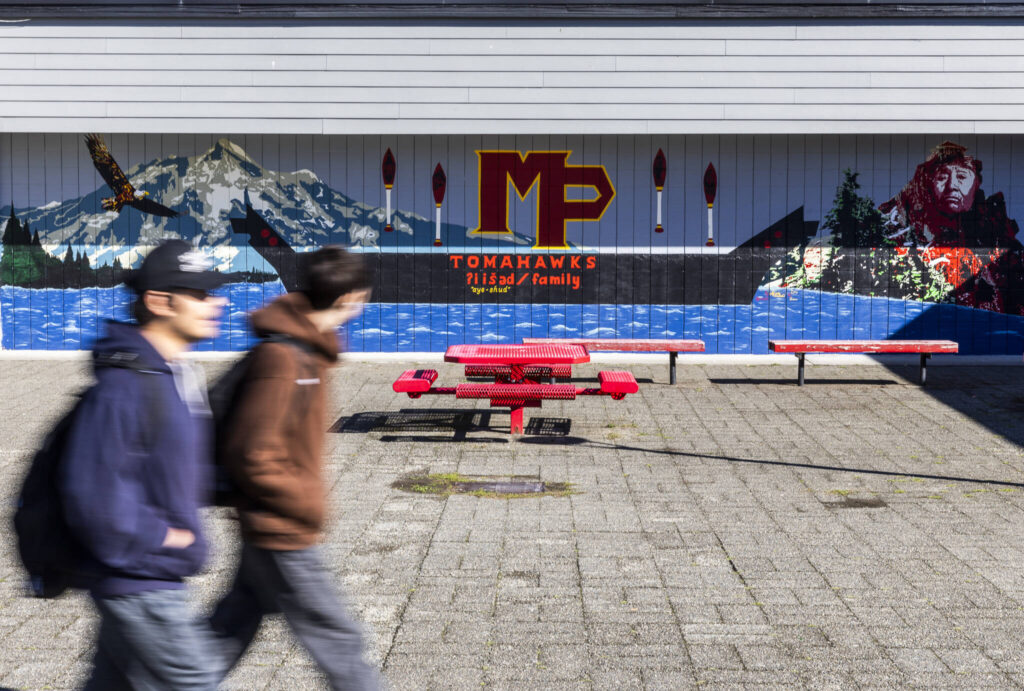MARYSVILLE — A mural unveiled at Marysville Pilchuck High School celebrated the renewed connection between Marysville and the Tulalip Tribes while honoring Pilchuck Julia, an early Snohomish resident.
Julia is “part of the living story of this place and the people whose ancestors have cared for it since time immemorial,” said Tulalip Tibes interim Manager of Positive Youth Development Deyamonta Diaz during the unveiling ceremony. “She carried living memory of this land before reservations and railroads, before the town that grew up around her.”
Julia was the last of the Pilchuck Tribe and lived between 1840 and 1923, according to the Tulalip Tribes. She lived along the Pilchuck River and was friendly to the settlers who eventually established the city of Snohomish.
Julia’s face — which spoke of work, wisdom and dignity, Diaz said — is captured in the mural within a depiction of Mount Pilchuck, a 5,000-foot rock formation near Verlot.
“As an artist, I always see faces in things,” mural artist Monie Ordonia said in an interview. “When I see faces in mountains, I know that those are the ancestors that are still here, and blessing us, and being that strong presence.”
Diaz invited students and staff to see Pilchuck Julia not as a distant figure but as a bridge between Tulalip and Snohomish — between memory and future.
“Let this image remind us that endurance can be graceful, that care for family and community is a form of leadership, and that our learning here is graded with the history of the land and the people who have always been its first teachers,” Diaz said.
Marysville Pilchuck High School’s principal Pete Apple sees the mural as a reminder of a history that needs to be discussed, he said during the ceremony.
“So much of our history has been hidden. We have not told the story of our entire population for so long,” Apple said. “A positive connection with the Tulalip Tribes is something that Marysville Pilchuck High School and the Marysville School District strive for. We’re one district that serves both the communities of Marysville and Tulalip.”
On the left side of the mural is a distant view of Mount Pilchuck “as if you’re seeing it from the water out in the Salish Sea,” Ordonia said. In front flies a bald eagle, a symbol of the native people.
“For me, it’s one of the spiritual messengers that takes the prayers of the people and brings it to the heavens,” she said. “Even today, the eagles are listening and bringing messages to the ancestors.”
The high school’s tribal advocate, Doug Salinas, worked with students early in the summer as part of a youth development program to prepare the outdoor wall for the mural and clean up the surrounding courtyard grounds, he said in an interview. Then in July, he started painting the canoe and paddles that make up the mural’s middle.
The canoe represents family and the pathways families take together, Salinas said. The raised paddles above the canoe are a sign of welcoming.
When Tulalip tribespeople come ashore, they raise their red paddles to signify who they are to people on the shore, Ordonia said. “We’re the only ones that do it. We’re the only ones who have red paddles.”
It signifies who Tulalip is, she said.
Ordonia began work on the mural Aug. 21, she said. She finished Sept. 13 after working 8-10 hours a day, seven days a week, to an audience of neighbors who came to watch her paint.
“That is community building,” Ordonia said during the ceremony. “That is expanding our family and to be able to have pride, not even just as students, but having that pride as neighbors.”
Ordonia hopes Pilchuck Julia’s presence will be a reminder of the relationships people can make across boundaries, just like Julia did during her time, she said.
Whether you are Native American or non-native, Ordonia said, “you can have beautiful relationships with each other and form a great community.”
Taylor Scott Richmond: 425-339-3046; taylor.richmond@heraldnet.com; X: @BTayOkay
Talk to us
> Give us your news tips.
> Send us a letter to the editor.
> More Herald contact information.




























